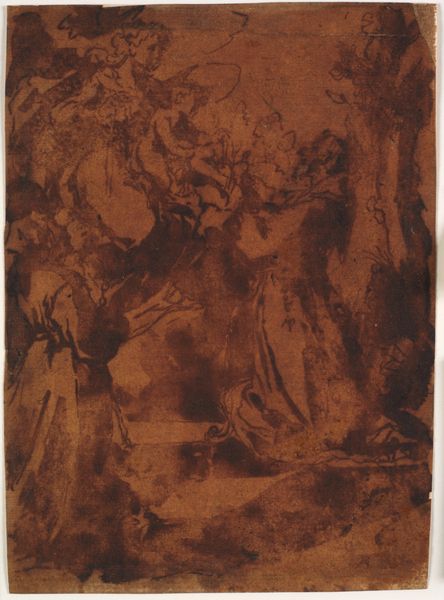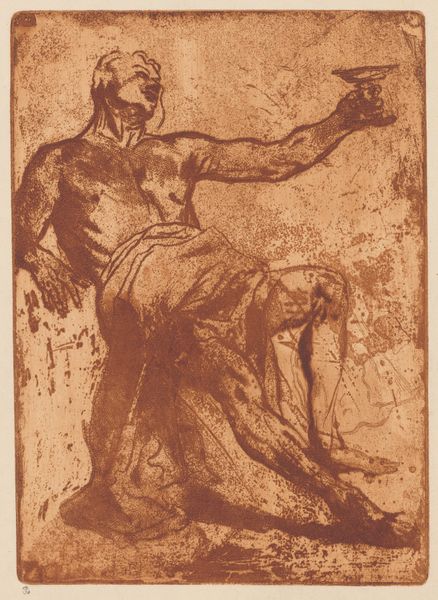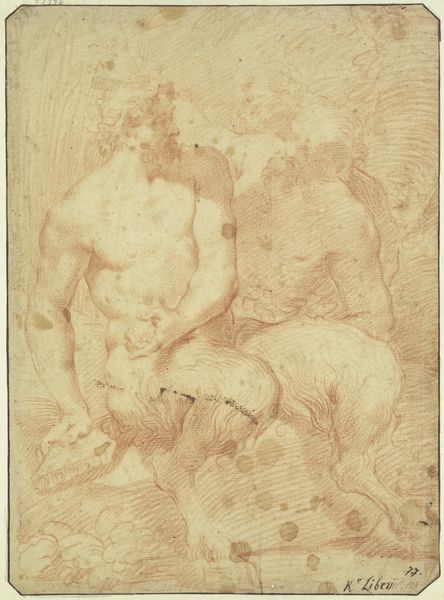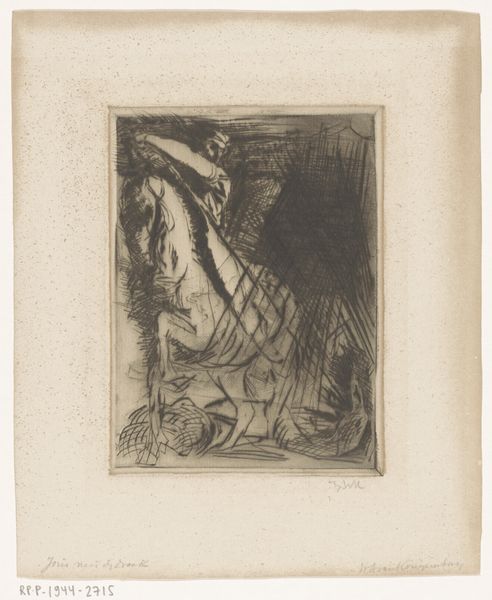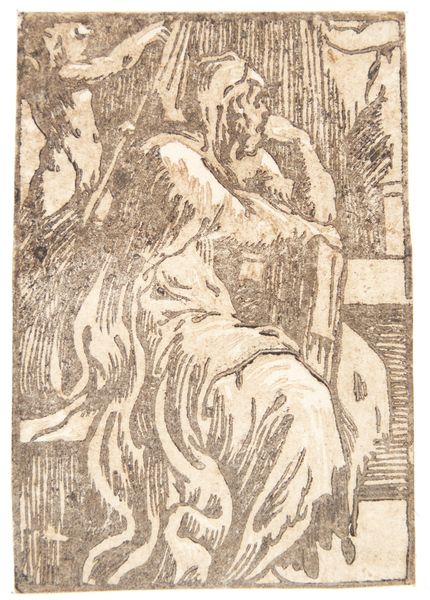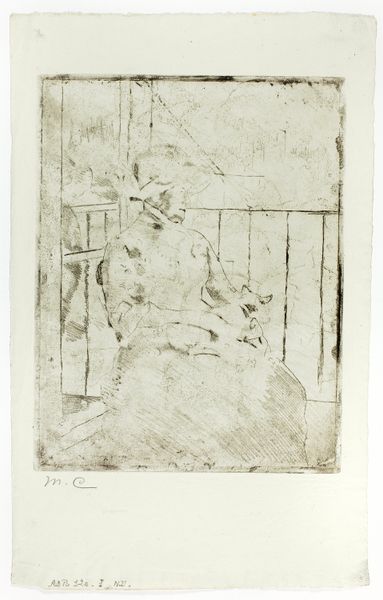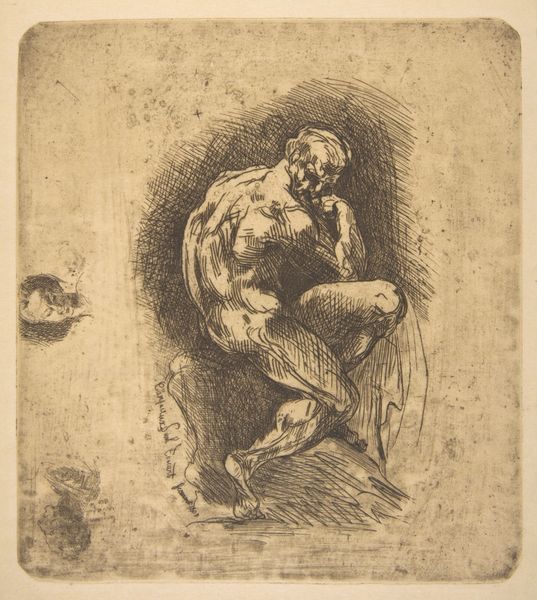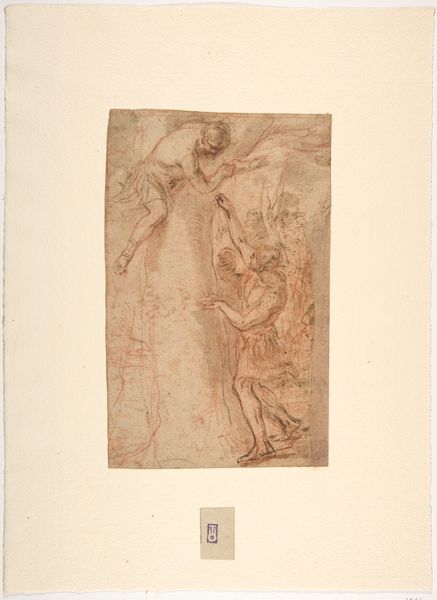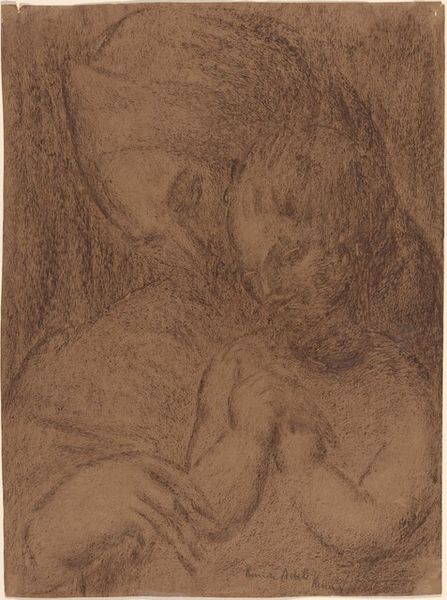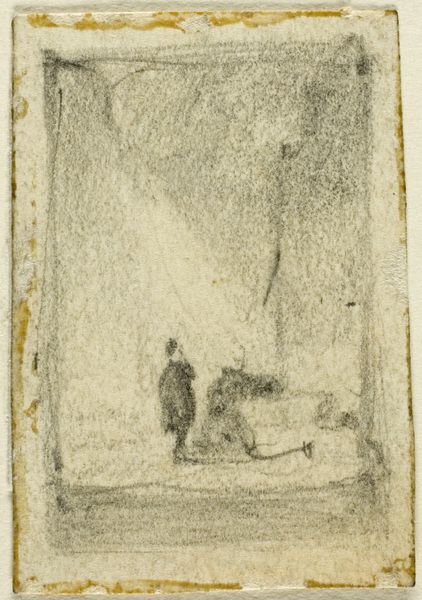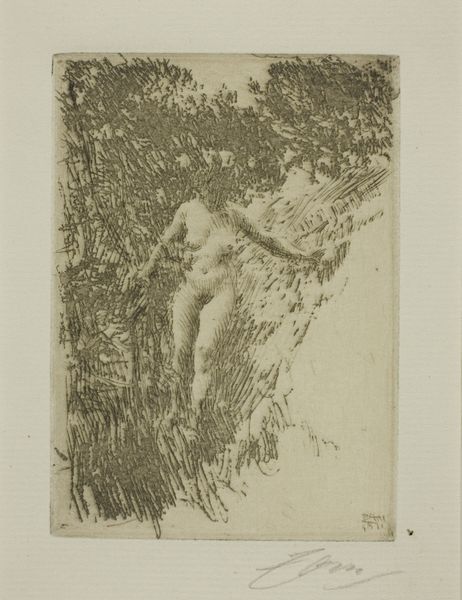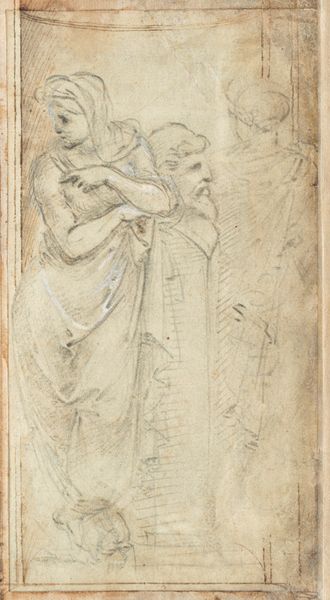
Dimensions: 134 × 63 mm (image); 145 × 78 mm (plate); 265 × 200 mm (sheet)
Copyright: Public Domain
Editor: We’re looking at Odilon Redon’s “Bather” from 1904, an etching printed with ink on paper. It's quite small and delicate, and feels very dreamlike, almost ephemeral. What's your take on this, especially considering its historical context? Curator: It's interesting to see Redon engaging with the bather motif, which was prominent in late 19th and early 20th-century art. Think of Renoir or Cézanne, but Redon subverts the typical celebration of idealized female beauty. This etching isn't just about depicting a nude figure; it's steeped in Symbolist ideas about interiority and the power of the unconscious. How do you see that manifesting in the composition? Editor: The woman seems isolated, almost melancholic. The landscape feels less like a natural setting and more like a projection of her internal state. Curator: Precisely. And Redon was working during a period where traditional academic art was being challenged. The rise of photography called into question the purpose of realistic depiction, pushing artists to explore subjective experiences and emotions. He created a space for psychological exploration, pushing the public role of imagery. Do you think this challenges our modern idea of art? Editor: Absolutely. I usually think about photography taking over that role and visual depiction becoming less crucial over time. Curator: Think about it this way: by focusing on individual feeling and challenging objective viewpoints in the mainstream, art could remain relevant in the modern, politically tumultuous world. Where is that line? And when do movements evolve? Editor: So, Redon wasn't just creating a pretty picture; he was contributing to a broader conversation about the purpose of art and its relationship to society? Curator: Exactly! And he challenged the expectations around acceptable themes. The art world was beginning to become less constrained in what could and couldn't be art, though these pieces had real societal reception at the time. It is important to recognize that! Editor: That's fascinating. I see this “Bather” in a whole new light now, understanding it as part of a cultural and artistic shift. Thank you! Curator: Indeed, there's so much depth beyond just the surface of an etching. Considering that original intent helps give depth to contemporary discussions on imagery as well.
Comments
No comments
Be the first to comment and join the conversation on the ultimate creative platform.
